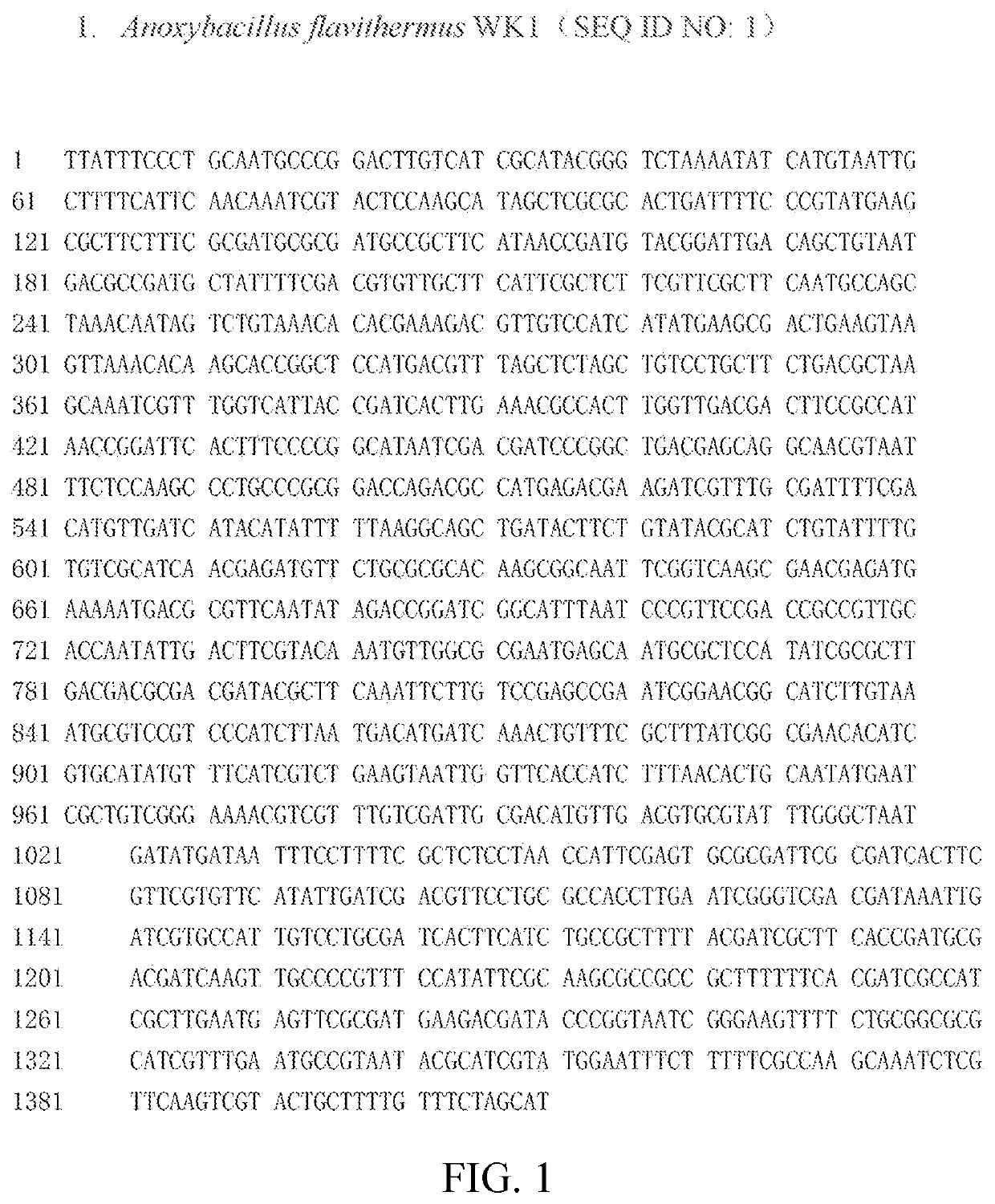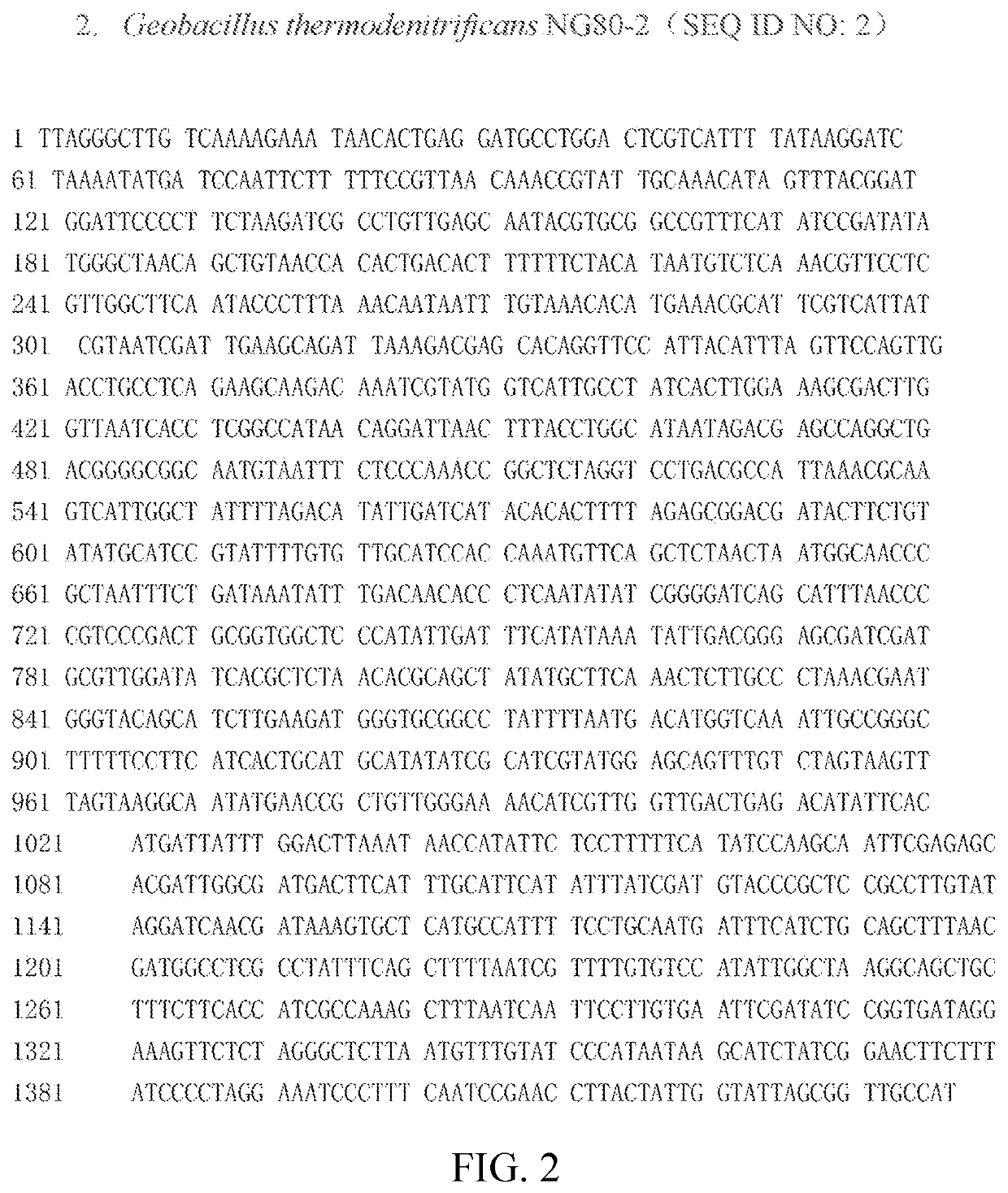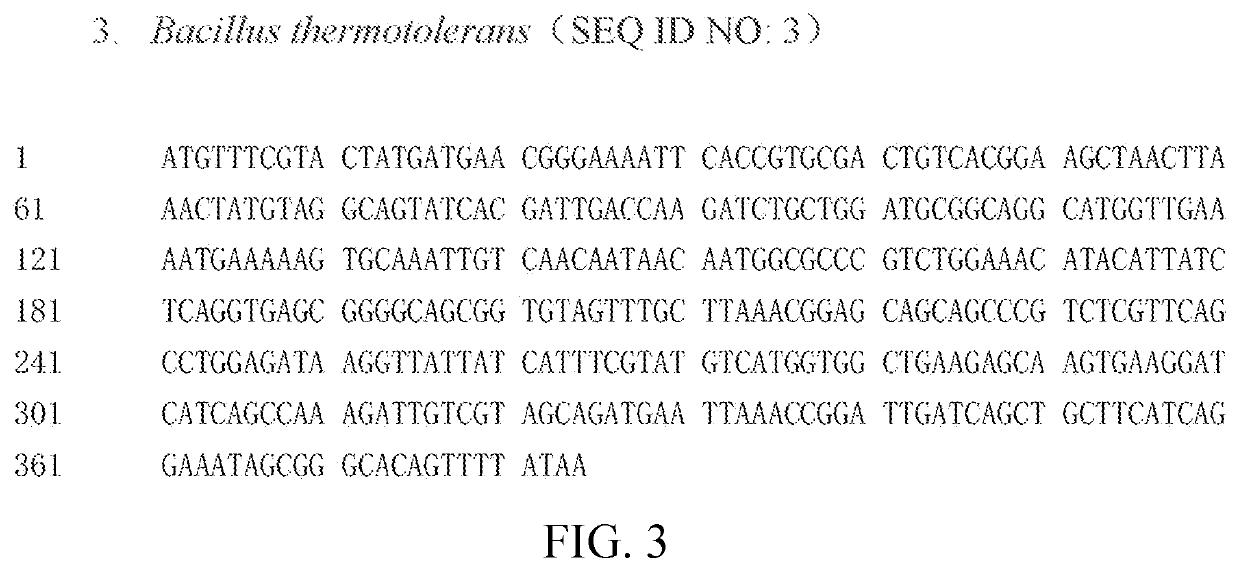Methods for preparing beta-alanine, beta-alanine salt and pantothenate
a technology of beta-alanine and pantothenate, which is applied in the field of biotechnology, can solve the problems of low yield, high safety requirements, and low cost of methods, and achieve the effects of avoiding the existence of excessive fumaric acid, reducing residual ammonia, and avoiding ph increas
- Summary
- Abstract
- Description
- Claims
- Application Information
AI Technical Summary
Benefits of technology
Problems solved by technology
Method used
Image
Examples
example 2
of β-alanine
Example 2.1
[0093]Engineered Escherichia coli strain containing aspartase (hereinafter referred to as “enzyme 1”) derived from Anoxybacillus flavithermus WK1 and engineered Escherichia coli strain containing L-aspartate-α-decarboxylase (hereinafter referred to as “enzyme 2”) derived from Bacillus thermotolerans were prepared with a reference to Molecular Cloning: A Laboratory Manual (3rd Edition) (China Science Publishing & Media) and Li Y. et. al. Appl. Microbiol. Biotechnol. 2017, 101, 6015-6021, fermented with a conventional LB medium or the method of Example 1 and then centrifuged (rotation speed: 5000 rpm, centrifugation time: 5 min) to obtain a wet engineered Escherichia coli for later use.
[0094]3 L ammonium fumarate solution (100 g fumaric acid / L) with the initial moles of fumaric acid of 2.586 moles and the initial moles of aqueous ammonia of 5.172 moles was obtained, and 3 g of wet engineered Escherichia coli containing enzyme 1 derived from Anoxybacillus flavith...
example 2.2
[0096]Engineered Escherichia coli strain containing enzyme 1 derived from Geobacillus thermodenitrificans NG80-2 and engineered Escherichia coli strain containing enzyme 2 derived from Anoxybacillus flavithermus AK1 were obtained with a reference to the same references in Example 2.1, fermented with a conventional LB medium or the method of Example 1 and then centrifuged (rotation speed: 5000 rpm, centrifugation time: 5 min) to obtain wet engineered Escherichia coli. 10 ml / 1 g cell of phosphate buffer at pH 7.0 was added, the mixture was stirred evenly, and the bacteria were disrupted by high-pressure homogenization to obtain a disrupted liquid of engineered Escherichia coli for later use.
[0097]3 L ammonium fumarate solution (150 g fumaric acid / L) with the initial moles of fumaric acid of 3.879 moles and the initial moles of aqueous ammonia of 7.758 moles was obtained, and 9 g of disrupted liquid of engineered Escherichia coli containing enzyme 1 derived from Geobacillus thermodenit...
example 2.3
[0099]Engineered Escherichia coli strain containing enzyme 1 derived from Anoxybacillus flavithermus WK1 and engineered Escherichia coli strain containing enzyme 2 derived from Methanocaldococcus jannaschii were obtained with a reference to the same references in Example 2.1, fermented with a conventional LB medium or the method of Example 1 and then centrifuged (rotation speed: 5000 rpm, centrifugation time: 5 min) to obtain a wet engineered Escherichia coli for later use.
[0100]3 L ammonium fumarate solution (75 g fumaric acid / L) with the initial moles of fumaric acid of 1.939 moles and the initial moles of aqueous ammonia of 3.878 moles was obtained, 20 mM pyridoxal phosphate (PLP) was added, and 2.25 g of wet engineered Escherichia coli containing enzyme 1 derived from Anoxybacillus flavithermus WK1 (the weight ratio of the wet bacteria to the initial fumaric acid was 1%) and 33.75 g of wet engineered Escherichia coli containing enzyme 2 derived from Methanocaldococcus jannaschii...
PUM
| Property | Measurement | Unit |
|---|---|---|
| Concentration | aaaaa | aaaaa |
| Fraction | aaaaa | aaaaa |
| Fraction | aaaaa | aaaaa |
Abstract
Description
Claims
Application Information
 Login to View More
Login to View More - R&D
- Intellectual Property
- Life Sciences
- Materials
- Tech Scout
- Unparalleled Data Quality
- Higher Quality Content
- 60% Fewer Hallucinations
Browse by: Latest US Patents, China's latest patents, Technical Efficacy Thesaurus, Application Domain, Technology Topic, Popular Technical Reports.
© 2025 PatSnap. All rights reserved.Legal|Privacy policy|Modern Slavery Act Transparency Statement|Sitemap|About US| Contact US: help@patsnap.com



